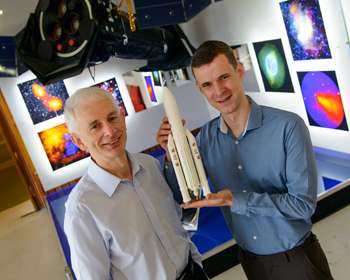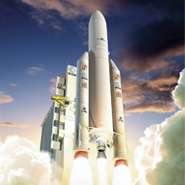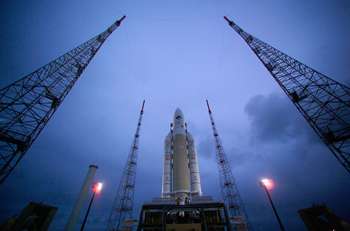European Space Agency to reduce vibrations in future space rockets

Engineers at University College Dublin have been contracted by the European Space Agency to find new ways to reduce vibrations during lift-off in future launcher designs.
The €250,000 contract will see the UCD engineers design a "control algorithm" which can tell the launcher's rocket engines and thrusters how they should most effectively be fired and controlled to absorb vibrations on their journey out of the Earth's atmosphere and into space.
Too much vibration can damage the launcher's structure and certainly reduces "payload comfort". The payload could be, for example, supplies for the International Space Station, or satellites for communication, for Earth monitoring, for global positioning, or large astronomical telescopes. The less vibration such delicate devices experience the better.
Reducing vibrations also helps to maintain the finely calculated trajectory of a launcher from lift-off into orbit. Any departure from this course must be corrected, usually by steering the rocket motors, but this reduces the main thrust forward and so consumes more fuel.
"Keeping launchers on course when immensely powerful engines are violently shaking the structure is a complex problem," says Dr William O'Connor, UCD School of Mechanical and Materials Engineering, University College Dublin, who will lead the research.
"This is made even more complex when you consider that there are tonnes of liquid fuel like liquid hydrogen and oxygen sloshing around inside a relatively delicate structure."

To lift-off, overcome the Earth's gravity, and enter orbit, launchers must quickly reach a speed of 28,000 km/h from a standstill. This requires an immense amount of fuel. They also need enough additional propellant to complete their mission.
At lift-off, about 90% of the weight of the launcher is fuel. About 90% of the thrust coming from burning the fuel is used just to lift the fuel itself. All the other weight, including the launcher structure, rocket motors, control systems, communication systems and of course the precious payload, must fit into the remaining 10%.
"The weight calculations are precise and literally every gram counts. If the ratio of thrust to weight from the chemicals in the fuel was a few percent lower, we would be stuck on Earth," explains Dr O'Connor.
With designs tending towards lighter and lighter structures, launchers are becoming even more prone to vibrations and oscillations.
"Our work aims to design more stable launchers, giving improved performance and a smoother ride than is currently possible," he says.
"Ultimately, it is all about safely delivering the payload into space with the most precision and minimum fuel consumption," explains Dr David McKeown a partner on the research also from University College Dublin.

The work will form part of ESA's Future Launchers Preparatory Programme (FLPP) which oversees studies and research activities aimed at developing technologies capable of delivering high performance and reliability for the next generation of European launchers.
Enterprise Ireland (EI) coordinates the participation of Irish companies and research teams in ESA programmes.
"The space sector is of growing importance for Irish industry, with a growing number of Irish companies playing active roles in a range of space activities. This project on the control of future launchers is an important new addition to this work, with potential for commercial spin-out of the research, and I congratulate Dr O'Connor and Dr McKeown on winning this ESA contract," says Dr Bryan Rodgers, Enterprise Ireland.
The research group at University College Dublin has previously worked on the control of large x-ray telescopes and a light flexible robot arm concept for an ESA Mars rover mission.
Provided by University College Dublin





















